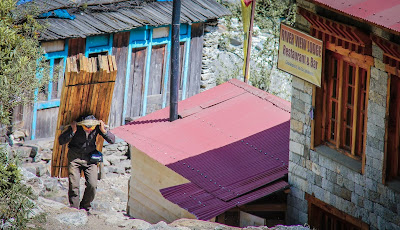In January this year I went to a Thai yoga retreat where essentially you fast, do yoga and meditate for 10 days. Now I do have my '
alternative' tendencies, and while ever keen to keep feet securely on the ground, I also recognise the amazing rewards you can get out of a bit of health, exercise and peace of mind. Namely, in my case 6 kilos, toe-touching and the ability to be surprisingly zen in the company of mi Venezuelan madre (who came with me) for a whole month.
While I was there I met some pretty interesting folk. Documentary producers, chefs, teachers, events folk, advertising peeps and peace-n-loving hippies. It was such a mix bag. One minute you're talking about the weather in the UK, the next you're taking a deep dive in to the world of Quantum Physics.
On day 7 of my fast, some 4 kilos down and reaching that point where the head rushes were intensifying and my yoga was at a stage where I could nearly kiss my knee without bending it - I decided to investigate some of the other abstract "healings" that were taking place at
The Sanctuary.
That is when I met Vinod, a Shaman from the UK, who owned a gorgeous wooden hut in the mountains overlooking the ocean. My consultation was to begin with a conversation about me. Why am I hear? Well I guess I'm just curious. What are you looking to achieve? Insight perhaps (although secretly I may have wanted to experience one of those far-out Shamanic rituals which included vomiting and hallucinations that Bruce Parry had in his BBC series, Tribes). What do you know about Shamans? They worship the earth. And so on... Until it was my turn...
What do Shaman's believe? There's no such thing as right or wrong. No polarised opposites like heaven and hell. What rules do they follow? The "natural laws" of the universe. That there are "layers" of other-worlds that they can connect with in their minds, like new dimensions... This is interesting I thought, so what can I do? You can find you're power animal, he said. Cool...
And so Vinod proceeded to begin the ritual. My job was easy. Lie down, breathe, relax and follow his lead while he played drums, chanted, burnt woody incense and asked me to "let go". The process was simple, in a state of relaxation I would go in to "other dimension" by visualising a beautiful place, falling down a hole and then coming out the other end where, potentially, I'd hang out with some animals until I found my "power" one... OK I'm losing you aren't I?
While ceremonious (and arguably sacred), the experience was more an exercise in imagination. Which is precisely the point. Vinod later explained that the Shamans believe you connect using the right-side of your brains to these "other dimensions". That these imaginings and visualisations are where you can attain insight. And he's right. Like how, apparently, Nobel prize winner Francis Crick discovered the structure for DNA while high on LSD. Not that I would advocate trying it yourself. I never have. But then again I've never discovered double helix molecular structures either...
Now I'm ever skeptical although equally open to new experiences and ancient rituals, they fascinate me, but regardless of whether Shamanism is a farce or not - the creative exercise is what keeps human-beings alive and progressing; finding solutions to problems and propelling us forwards through the manifestation of ideas.
And as for my Shamanic ritual, perhaps I did attain a bit of insight, I discovered that you should not have one in the jungle without wearing insect repellent and that my Shamanic Power animal is an Elephant...
and a Monkey....
Hey, no one said you can't have more than one ;)






















